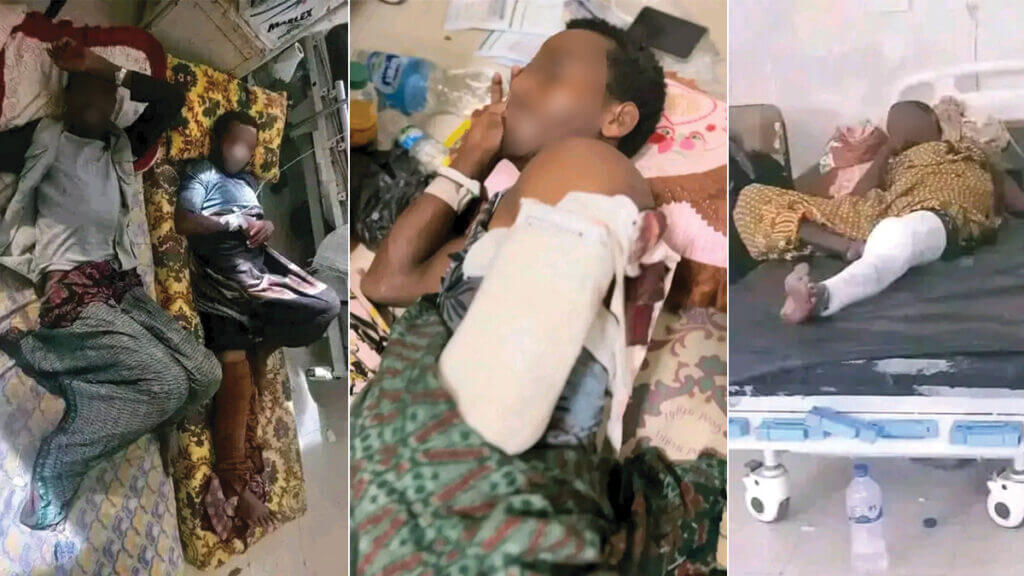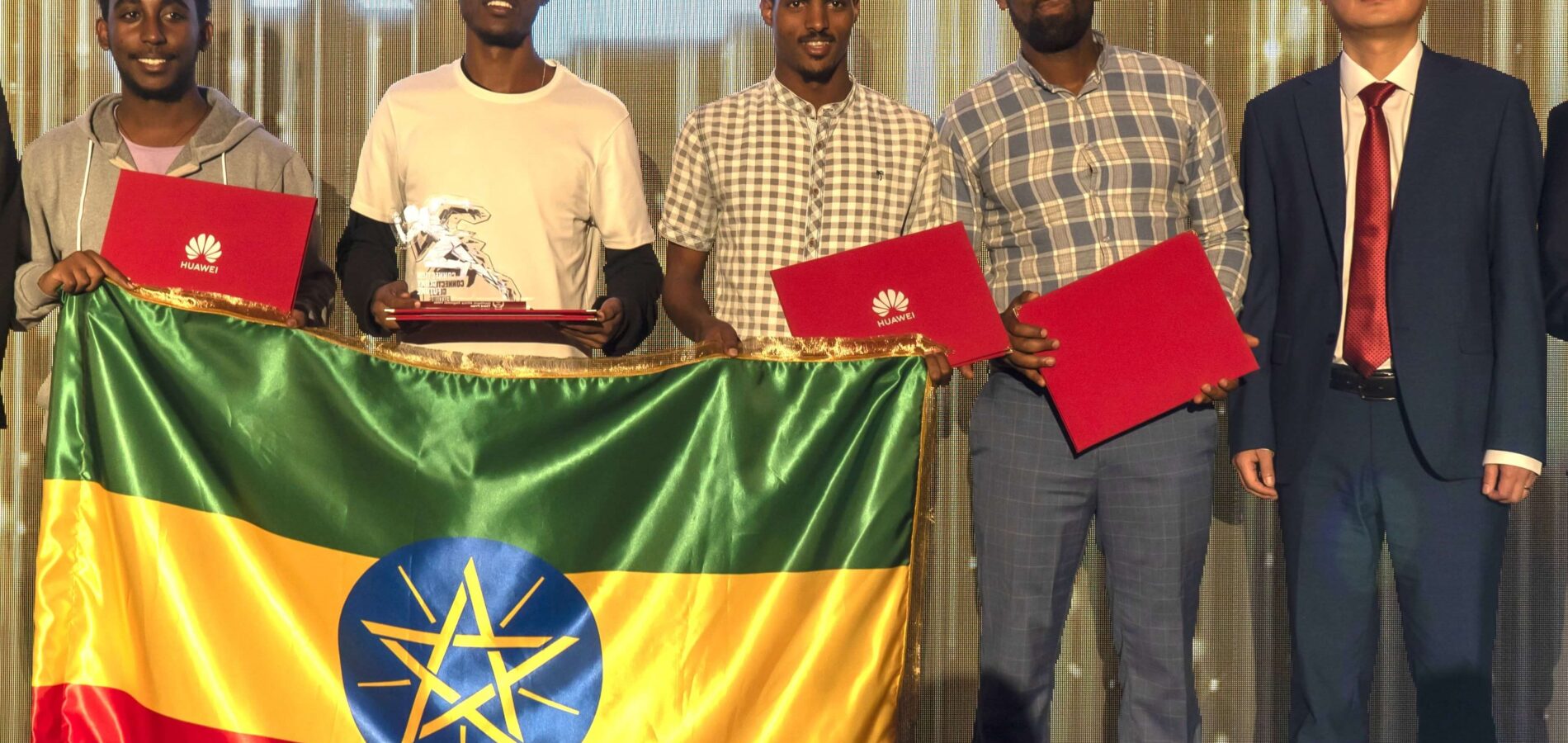Special Edition: Failed politics and deception: Behind the crisis in western and southern Oromia

Please click here to download the PDF version of this in-depth analysis.
By Zecharias Zelalem
@ZekuZelalem
March 20/2020 – Dozens of unarmed civilians have been shot dead by Ethiopian army soldiers operating in the Qellem Wollega district of the Oromia State over the course of the past five weeks. Estimates are that since January 20th, over a hundred others have fled their homes for the relative safety of the neighboring Gambela region. Most victims appear to have been young men, suspected by soldiers of supporting armed Oromo Liberation Army (OLA) rebels who operate in the area and have maintained a virtually ubiquitous presence in the region’s forests and hills. These killings are but the latest to have occurred in the region that has over the course of the last year or so, turned into a war zone.

The majority of the recent killings took place in the town of Mugi of the Anfilo woreda, a lush coffee farming district of rural Oromia, located about 680 kilometers west of the Ethiopian capital Addis Abeba.
The area had been under the control of OLA rebels, but has since been recaptured by the army. The killings appear to be a retaliation against locals the federal army accuses of enabling the OLA presence. Last year, the Ethiopian army had been given the green light by the federal government to militarily crush the OLA. In the year since, the two sides have traded control of territory in and around Qellem Wollega. The jostling to oust the other side of their presence in the region has led to countless civilian deaths as well as the destruction of livelihoods and the local infrastructure.
Due to the government’s decision to put the entire conflict region under a command post, the area was inaccessible for local journalists, making obtaining accurate information about the crisis extremely difficult. It is in these circumstances that the Ethiopian government has succeeded, to some degree, in concealing the fact that what many now call a civil war was raging in the country’s west. But that seems to have come to end as journalists, especially foreign correspondents, began traveling to the area to file reports from the ground. The latest such report was opublished on The Econimist on Thursday March 19.

Naol Misganu was a 22 year old mechanic who lived in Nekemte when he was shot dead by soldiers who encountered him on February 2.
Caught in the crossfire
“My brother was merely headed to work. We have two stores in the area,” said Petros Bedane in a phone conversation with Addis Standard. Petros’ brother Nebiyu, 20, was shot dead by soldiers on January 28th near Mugi. “He wasn’t a member of any group. He was simply out to make a living when the soldiers came by his store. He was murdered right outside of it.”
Another grim report was of a killing which took place on January 21st just outside of Mugi in the nearby village of Dolla. Soldiers rounded up five men and interrogated them at a private home before gunning them down, according to victims’ families. Among the dead, a set of brothers, Dereje Elias, 34, and Daniel Elias 24. Their cousin, Abel Bari spoke to Addis Standard.
“Daniel had recently earned his college degree and Dereje worked to support their parents. They were treated like criminals,” Abel said struggling to restrain his emotions.
His Facebook page has turned into a memorial for the brothers, with social media users flooding his posts with comments expressing their condolences for his loss. “We will get our revenge, don’t worry,” reads one user’s ominous message.
“There wasn’t even any fighting or anything like that in Dolla. Just innocent people trying to get by. But those soldiers still came and murdered them. They were my brothers.” Abel says the family will likely never come to terms with their sudden loss.
In their recent report on the bloodshed in the region, the Voice of America’s Afaan Oromo language desk cited locals who pointed out that trigger happy soldiers were shooting at anyone they encountered. In the report, one youth who had fled to Gambella reiterated this to the outlet. “What is happening in the city is awful. Especially for the youth. The military is not just arresting, they will simply kill you as you walk the street. Right there. Whether you have connections with the OLA or not, they don’t bother to figure out, they kill.” Another individual, unnamed in the article, suggested that OLA fighters have also carried out revenge killings of people they suspected of being army informants. Civilians were bearing the brunt of the atrocities carried out by both sides, he said.
The military typically avoids commenting on such reports. Major General Mohammed Tessema, the Ethiopian army’s indoctrination and public relations head was unwilling to discuss the killings when Addis Standard reached him by phone. “I am unable to comment, I am out of my office,” he said before abruptly hanging up. He promptly switched his phone off afterwards.
Oromia regional state security chief, Colonel Abebe Geresu, also resorted to hanging up and switching off his phone when told he was speaking to a member of the press. But the BBCs Afaan Oromoo desk managed to reach the military’s deputy chief of staff, General Birhanu Jula. The General told the reporter that reports of massacres being committed by the army were false. “Ours is a professional army,”he said, “Our soldiers can differentiate between bandits and civilians.”
But other reports from the area tell a whole different story. “When I heard the shots I said, ‘Oh my God, they killed my son,'” Likitu Merdasa, the mother of 27 year old Desta Garuma told Agence France Presse. Desta too was killed by soldiers in January.
The soldiers that killed Dereje and Daniel, Abel’s cousins, and dozens of others, caused hundreds more to flee to the relative safety of Gambella. Ermias, 45, who asked his full name not be published, and is one of the civilians who fled to Gambella, told Addis Standard that the number of people from Qellem Wollega who had fled for Gambella since January has topped 500. “We are safer in Gambella, but many have no money for food and shelter. I don’t know for how long we will be able to last here.”
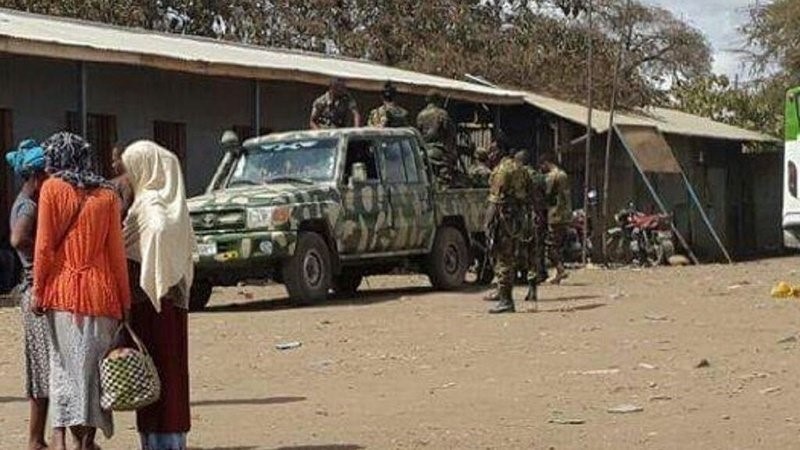
A conflict with no end in sight?
The conflict that has seen the likes of Ermias be displaced from their homes shows no sign of subsiding. The OLA leadership says its reasons for pursuing armed struggle are linked to a lack of democratic freedoms. It calls on the government to allow opposition parties to operate freely and to prosecute former EPRDF regime officials among other demands. OLA also claims to be open to talks, with the condition that a neutral third party attends as a mediator. Something that Dr. Alemu Sime, a senior advisor to the Prime Minister told the BBC’s Amharic language station last year was “unnecessary.”
Last month, in an interview with a local TV outlet, LTV, Colonel Abebe Geresu od Oromia region’s security bureau claimed that such demands had been rendered moot as the OLA had already been “militarily dealt with.” But his claims contradict reports of ongoing military engagements and the continued complete Internet and phone lines blockade of four zones in Qellem Wollega, the same areas where Colonel Abebe claimed were already pacified.
The OLA maintain websites and a Twitter account which with it releases communiques and “battleground updates.” The group announced on their Twitter account that they were even open to demobilization. “While we are ready to continue waging this struggle for as long as we must, we earnestly hope that peace & democracy are the ultimate victors,” reads a tweet from the group’s Twitter account published in October of 2019.
But the federal government claims that it was forced into a foxhole by the group and left with no alternative other than the use of force. The Ethiopian government has deployed federal army troops and Oromia regional state Special Forces into the region which have engaged the OLA rebels in mostly rural settings, with battles being reported in thick forest terrain as well as in the mountains.
Shimelis Abdisa, President of the Oromia region, has told Addis Standard that government forces have suffered a combined 670 combat losses of federal army regulars and state security forces over the past year. “Entire areas of Qellem Wollega suffered a lot because they were cut off from essential government service supplies such as electricity and water,” Shimelis said, blaming OLA members for the disruption.
Despite this, he claims to be optimistic about the government’s chances of defeating the rebels. Addressing reports of an increase in military operations in the region, he said that these were part of a final push to deal with “an insignificant number of remaining OLA fighters who are exploiting the remote nature of the terrain to hide and last as long as possible in the conflict areas. They have no viable combat strategy to sustain an armed struggle,” President Shimelis said.
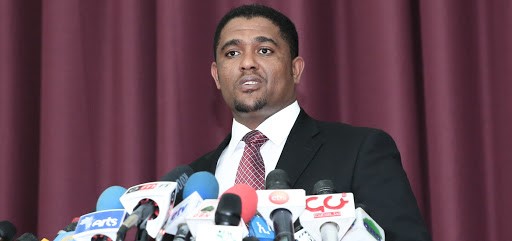
President Shimelis also said that among the tactics employed by the OLA, assassinating businessmen, district administrators and other officials deemed to be affiliated with the regional or federal government were some of the tactics used by the rebels to push the government out of western Oromia. As a result, large swathes of Qellem Wollega remain ungovernable and are thus prone to the spread of lawlessness.
These accusations and counter accusations by each parties laid bare the fact that government-OLA peace talks have failed on more occasions than is known to the general public, triggering the bloodshed, despite both parties at one time or another expressing a willingness to sort out differences peacefully.
In the era of political liberalization, how did Ethiopia end up here?
Among the reasons the nature of this crisis can be confusing to the public is many people’s assumption that all had become water under the bridge between the government and the various Oromo armed entities. But despite Ethiopia’s political reforms of 2018, sticking points remained and further negotiations were required to amend things with the OLA. Many of these negotiations, which involved a plethora of Oromo scholars, political personalities, community elders and representatives of both the rebels and the federal government, were conducted behind closed doors, hence the lack of clarity of what exactly led to the breakdown in talks.
The failure to reach an agreement with the armed rebels have also led to OLA’s April 2019 decision to severe ties with its political wing represented by the Oromo Liberation Front (OLF). As such, the political became no longer an entity to be held accountable for the actions of the OLA and reigning in the rebels became a lot harder.
The OLA rebels were no longer represented by a relatively pragmatic figure and veteran party chairman, Dawud Ibsa. They now only answer to their battlefield commander Kumsa Diriba, a thirty something year old former Addis Abeba University student better known by his nom de guerre, Jaal Maaro.
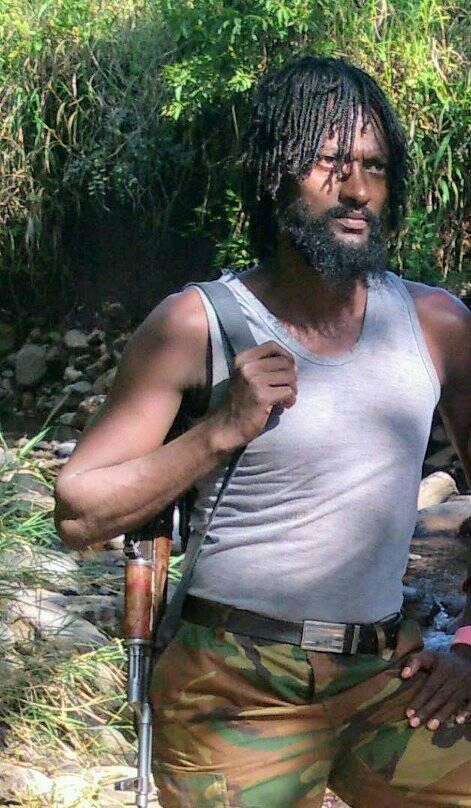
The OLA had always been affiliated with its parent organization, the Oromo Liberation Front (OLF). The OLF, designated as a terrorist organization by the Ethiopian government in the early nineties, had its membership outlawed until 2018. As a result, tens of thousands of Oromo youth were rounded up and detained over the course of the nineties and into the twenty first century, with OLF membership as a pretext. The organization’s leaders were forced into exile and the OLF’s armed wing, reeling from the pressure of repeated army crack downs, relocated its base of operations to Eritrea, at the time a political rival of Ethiopia. Despite its endless political woes, including a debilitating spilt, lack of battleground successes and repeated fracturing of the group in recent years, the OLF, which has a history of armed struggle dating back to its founding years in the seventies, remained an organization seeped in Oromo folklore. When Prime Minister Abiy Ahmed ascended to the Ethiopian premiership, he announced he would usher in an era of reform that decriminalized many opposition organizations, including the OLF. The move was widely celebrated among Oromos in Ethiopia. The OLF announced that with such conditions, armed struggle was no longer necessary and announced its intention to register as a political organization and take part in the Ethiopian political process.
Beginnings of brewing mistrust
OLF leaders, including the likes of the long serving Dawud Ibssa returned from exile. Fighters based in Eritrea put down their weapons and did the same. The arrival in the capital Addis Abeba of some of its founding leaders saw the city adorn in OLF colors and emblems for a day at a reception ceremony held for them in the city’s main square. Such was the fanfare and excitement as the prospects for concrete peace looked good.
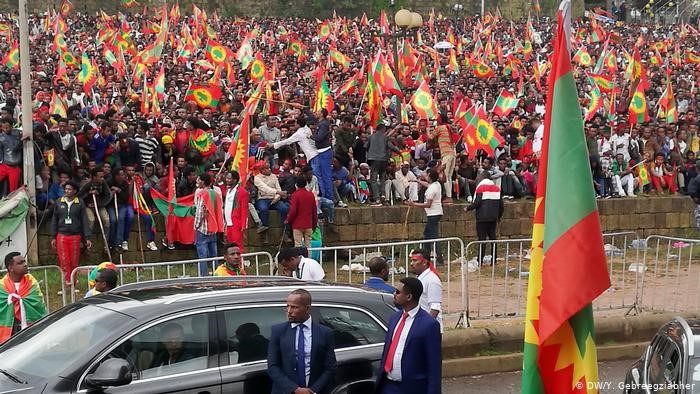
Months later, the various OLF leaders who had fallen out with each other and had fractured the group into opposing factions would begin to reveal itself. Chairman Dawud Ibssa is largely recognized as the group’s legitimate leader, who led negotiations with the government. Despite this, the government appointed his former OLF comrade-turned-rival, Brigadier General Kemal Gelchu, as the Oromia region’s security chief. The move caught Dawud Ibsa off guard and he revealed that this fostered suspicions and distrust against the government amongst members of the OLF led by him. Brigadier General Kemal was among the many OLF-breakaway leaders who took up Prime Minister Abiy’s offer to return from exile and was one of the first returnees, coming home in July 2018. The sudden ascension of the chairman’s foe to the helm of the regional security was perceived as the government’s attempt to exploit rifts within the OLF factions.
Soon disagreements as to what exactly was agreed between the OLF, led by Dawud Ibssa, and the federal government surfaced. Although fighters based in Eritrea returned unarmed, it later emerged that the group had formed militias who were already in Ethiopia and armed. Their presence became a problem. It’s unclear who backtracked out of doing their part, as the terms of the peace treaty signed in Asmara by current Defense Minister Lemma Megersa and OLF Chairman Dawud Ibsa weren’t made public. It emerged that the OLF armed contingent in the country numbered at least several thousand fighters. They weren’t keen on surrendering their weapons and the OLF leadership in Addis Abeba was reluctant to push them to do so.
Dawud Ibssa stated that there had been no specific agreement to disarm. “Contrary to popular belief, we have actually not reached an agreement with the government on disarmament,” he told state outlet Walta in October 2018. “But we are in agreement that we must all collaborate to ensure peace reigns in the region.”
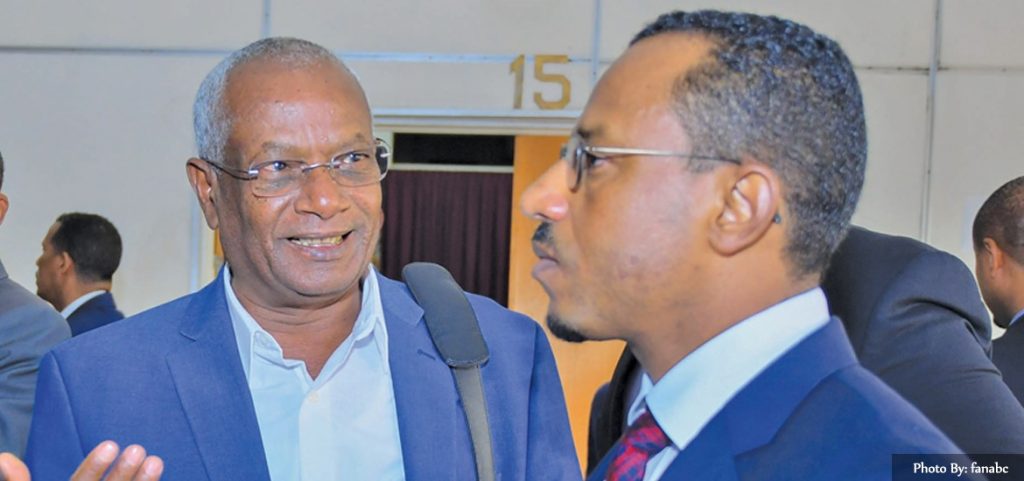
In response, the Ethiopian government released a statement in which it threatened to disarm remaining militants by force. The war of words almost derailed the process before both parties toned it down, after which spent the next few months hashing out a deal that would eventually see the OLF take part in the upcoming 2020 Ethiopian Elections and its fighters incorporated into the Oromia regional state police force.
The talks, brokered by a committee of 71 individuals including Abba Gadas, community leaders, party representatives and influential individuals such as Jawar Mohammed had yielded a result for an immediate ceasefire followed by demobilization and encampment of OLA members within 20 days following which OLA members will undergo reintegration training.
In May 2019, the OLF publicly announced that it has disassociated itself from its own armed wing, the OLA, paving a way for it to register as a national political party and compete for seats in constituencies across Oromia and throughout the country. It also signaled the possibilities of an increased military assault by government forces against members of OLA, which already announced its decision to break away from OLF in April.
Despite OLA’s decision in April to cut ties with OLF, close to one thousand fighters who were still armed and were operating in various parts of the country, particularly in western and southern Oromia, adhered to the ceasefire and used the 20 days deadline to make their way to state rehabilitation camps where they were promised an amnesty and a fresh start after training. As per agreements reached with the intervention of community elders, former fighters would be assessed over their eligibility to join one of several state security agencies. OLA membership dwindled as a significant numbers of its members traded their camouflage for the blue uniform of the Oromia regional state police.
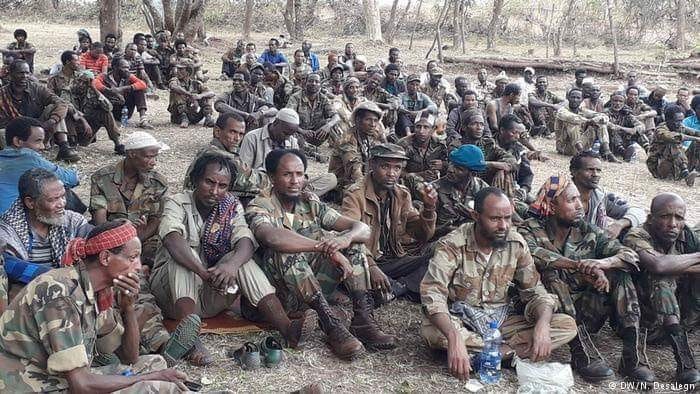
A ceasefire and rehabilitation deal gone terribly wrong
Almost immediately, reports of returnee fighters being singled out for arrest, and beatings started making the rounds. Fighters who successfully completed the rehabilitation program were promised a fresh start, but instead a number of them were rounded up and sent to detention centers. OLF leaders, including Dawud himself cried foul when they were prevented, at least on one occasion, from visiting a rehabilitation camp at Ardaita in the Arsi zone.
A few local media outlets have accorded regular coverage to the crisis, something that some cite is due to the government’s sustained media blackout regarding the process. But one outlet providing regular updates, including conducting rare interviews with OLA commander Jaal Maaro, is a newly established satellite based Kush Media Network (KMN). KMN’s Habtamu Tesfaye has been part of the network’s team and has covered the arrests of rebels who heeded the government’s call to lay down their arms.
“Many of them have become prisoners and some are in held Qilinto,” Habtamu said, referring to the federal prison in Addis Abeba. “Because of the treatment they have received at the hands of security forces, there are even individuals who, after being freed from prison, went back to the warzone and rejoined OLA rebels.”
“I can say with certainty that the government is at fault for the continuation of the conflict and the bloodshed that came with it,” Habtamu told Addis Standard. “There are no incentives for rebels to surrender, as the government hasn’t kept its promises and continued to label former fighters as the enemy even after they’ve stopped fighting and have surrendered their weapons.”

Habtamu believes the government could still put an end to the killing by withdrawing armed forces and calling the remaining rebels back to the negotiating table. “But the government has already proven that it can’t be trusted. After all they’ve been through, it wouldn’t be unreasonable of the OLA to ask for a neutral mediator.”
So what exactly is preventing Addis Abeba from reaching a settlement?
A prevailing narrative is that the government’s unwillingness to compromise is due to the belief that a sustained crisis in in western and southern Oromia would suit its interests of incapacitating the OLF better than any peace deal. Both areas are inherently strongholds of OLF.
Dr. Henok Gabisa teaches at Virginia’s Washington and Lee school of law. A native of Dembi Dolo in Wollega himself, he says he personally met with a number of government and OLF personalities and sought to better understand what was hampering negotiations. He noted some of his observations via his Twitter account in a thread recently, which detailed what he believes were the government’s motivations behind escalating the conflict. Dr. Henok told Addis Standard that in the event of peace reigning supreme and elections being held, Prime Minister’s Abiy Ahmed party would likely suffer total defeat at the polls in, especially in Wollega which has a historical affinity with the OLF. With polls scheduled for August, elections in Wollega are likely to be cancelled citing the security situation. Without votes from Wollega, the OLF would be dealt an electoral defeat.
“The government is the one setting obstacles,” Dr. Henok said. “The mistreatment of fighters and the public show of force meant that the initiatives by the Oromo elders and respected individuals would be in vain. They pushed for war. It’s a senseless conflict fueled by political interests, but innocent people are the ones caught in the crossfire.”
OLF supporters on the campaign trail have been arrested, beaten and threatened by state security forces over the past few months. Amnesty International reported that at least 75 OLF supporters had been arrested last month, with most of them rounded up while peacefully attending various OLF campaign functions.

It’s impossible to ascertain the allegation that the government intentionally sabotaged negotiations to give itself a fighting chance at the polls in Oromia. But what isn’t in doubt is that the government did little to refrain from unconstructive behavior that contributed greatly to the breakdown of talks and loss of trust.
Renowned activist and head of the OLF’s youth chapter, Lammi Begna, spoke to Addis Standard about the failure of the talks. He says negotiators “disrespected” the rebels and didn’t follow standard protocol used to build trust and confidence among the rebels.
“The government rushed to label the rebels bandits with no objective,” Lammi said. “The rebels were never given the opportunity to bring forward their own ideas to the table. The government didn’t want them in the democratic process. Instead it campaigned against them with all means at their disposal which further created mistrust and forced rebels to reconsider.”
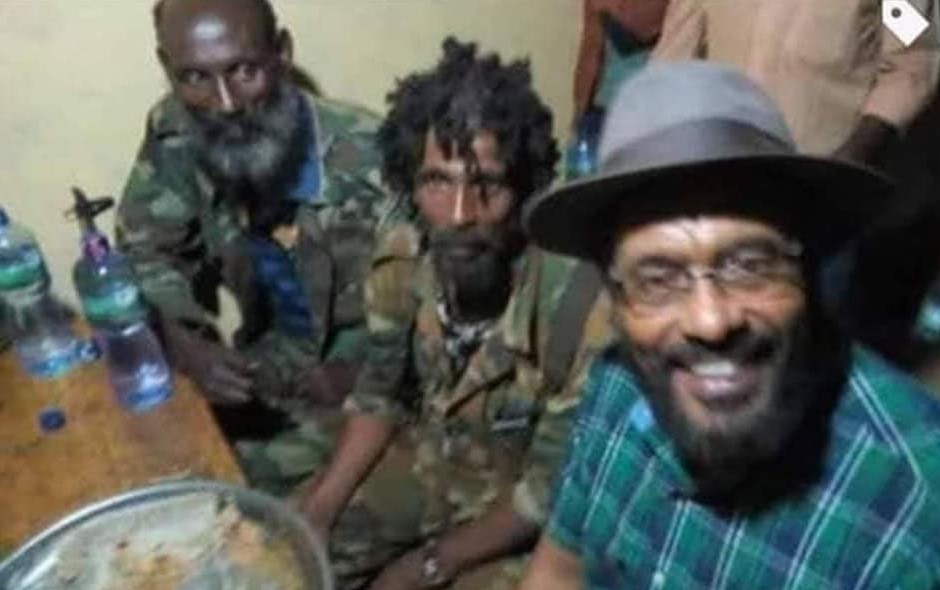
Earlier indications during the 20 days deadline to disarm and encamp indicate that many of the rebels were more than willing to give up the armed struggle and join rehabilitation camps. Skeptics assert OLA’s struggle has no visible end goal. It isn’t fathomable for the ragtag rebels, who are thought to number several thousand, to contemplate defeating one of the largest armies in Africa. In addition the price of maintaining control of some of the areas would be costly both in lives of the local population and also in their effort to win the hearts and minds of those in whose name they claim to fight, the Oromo nation. With the once exiled and detained Oromo scholars and politicians freely voicing themselves on platforms such as state media, a pipe dream only three years ago, many felt no need to pull triggers in pursuit of their rights and freedoms. With all this taken into context, any observer could see how it wouldn’t be too difficult to sell the idea of peaceful struggle to remaining fighters and coax them out of the bush.
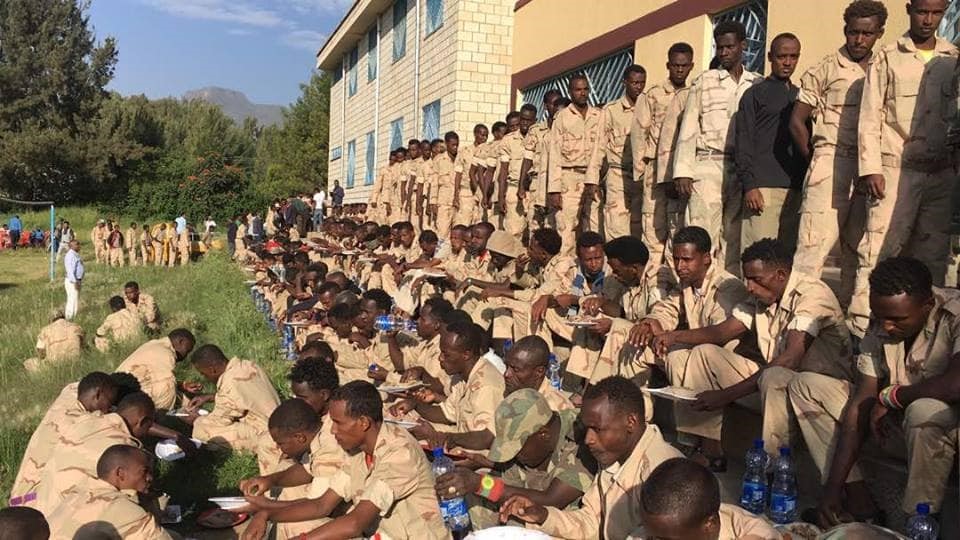
But the government’s rhetoric voiced in several media outlets wasn’t helpful. Dr. Alemu Sime, one of Abiy’s advisors would sound somewhat reasonable when speaking to local Amharic news media, saying that the OLF “couldn’t wage war while talking about peace.” But his tone in Afaan Oromo, the language understood by the rebels, was far more abrasive. He boasted that the government would “send the army to crush remaining rebels within 15 days.” In his recent interview with the BBC Afaan Oromo, the military’s deputy chief of staff, General Birhanu Jula himself labeled the rebels as a bunch of mentally deranged individuals. These statements have likely given some rebels the fear that they would be treated as prisoners of war if they surrendered.
Compounding things were disturbing reports coming from the camps where returnee fighters were staying. In April of last year, 150 former OLF fighters, who had been encamped at a government rehabilitation site, were sent to a hospital in the town of Wolliso to be treated for food poisoning. News of the bizarre incident was followed by testimony of fighters and their relatives who took to social media to report of squalid conditions in camps, including lack of sanitation and of food. It also emerged that for some of the rebels, the “rehabilitation” program felt more like detention, as their stays went on for months without ever being told when they’d leave. Some likely regretted their decision to leave the OLA. Later, some of these former fighters were reported to have gone on a hunger strike to protest the lack of maintenance at these facilities.
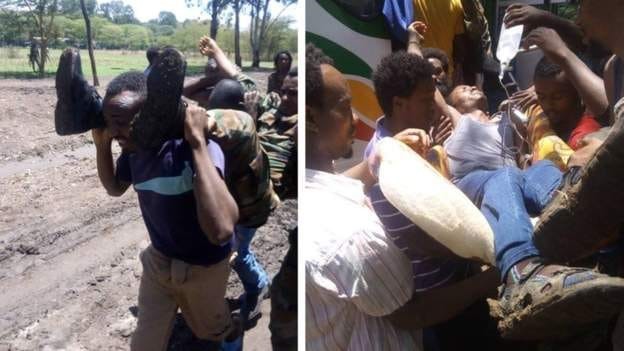
“Hearing these things made us doubt the sincerity of the government’s intentions,” says one former fighter. Adugna, who only wanted to be named by his given name, is in his early twenties and decided to join the armed struggle in 2018. He spent about eight months with the rebels on the southern frontier before deciding he had enough. But his life since has not panned out the way he expected it.
“I have had to flee my hometown and live with relatives in Hararghe,” a rueful sounding Adugna told Addis Standard. “Soldiers hunt us down and want vengeance for their friends they lost in battle. I’m not safe.”
Adugna says that the prospects of peace appealed to many of his fellow fighters in the bush. What convinced him to leave the struggle was the involvement of the “Aba Gadas,” (Oromo elders who were part of the 71 committee members of the peace negotiations), as well as the decision to lay down arms by a number of notable OLF commanders.
Hunde Deressa, better known by his nom de guerre “Dinaraas” was reportedly Jaal Maaro’s right hand man on the hotly contested western front. An influential personality amongst the rebels, his decision to give peace a chance, likely swayed others to do the same. “When (Dinaraas) left, many others decided to leave the bush,” Adugna explains. “Everyone respected him.”
Hunde was invited to join the ranks of the Oromia regional security apparatus. But while in the city of Bishoftu in September 2019, he was shot and left seriously injured. Oromia security head Colonel Abebe Geresu speaking with the VOA’s Afaan Oromo desk at the time said he was still trying to establish the identity of Hunde’s attackers. Hunde spent weeks hospitalized in Addis Abeba before succumbing to his injuries on October 11th.

“The government was behind his death,” Adugna is confident in his belief, even without seeing any evidence. He says that the prevalent belief among fighters is that Hunde was murdered by members of the Ethiopian army to demoralize the rebels. “I am 100% sure that many changed their minds about leaving the struggle when they heard of Hunde’s death,” Adugna says, adding “they promised to protect us and give us jobs if we stopped fighting. But if they can kill a high ranking leader like Hunde, they can definitely kill anyone. Why would we believe them?”
On January 31st, another prominent fighter lost his life in equally murky circumstances. Gurache Wato Guyo spent over a decade fighting for the OLF in parts of Southern Ethiopia. His piercing eyes were remembered by many as he was featured in a rare documentary made about the group by a Kenyan journalist, Yassin Juma, back in 2009. The 19, Gurache crouched down clutching his Ak-47; he was tasked with protecting the Kenyan journalist as he slept at night, embedded with the rebels.
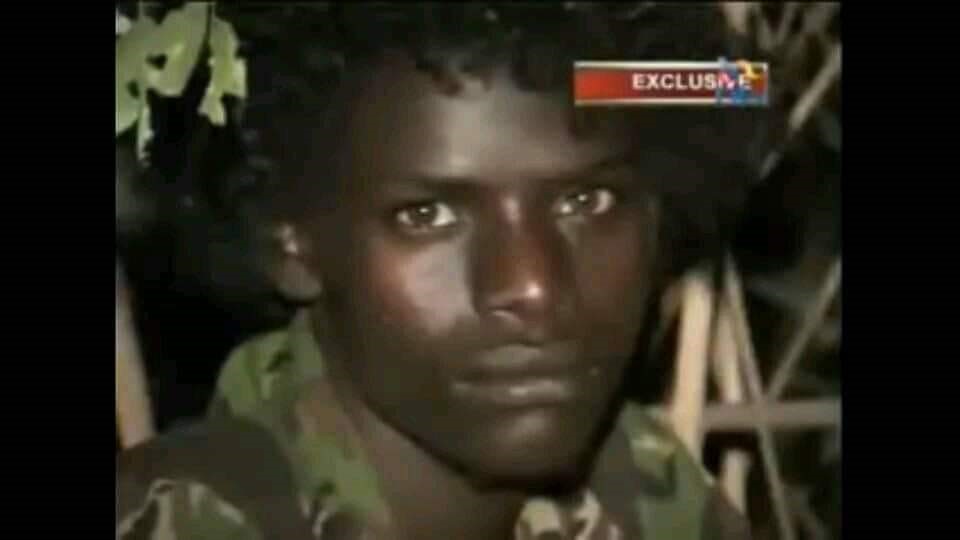
A decade later, he too decided his time as a fighter had come to an end. Now aged 30, Gurache surrendered his weapon, left the OLA and spent some time at one of the government run rehabilitation camps before settling in the rural Elwayo district of the Borena zone. His death was announced on January 31st via OLF online portals. Addis Standard has viewed images too graphic to publish showing what appear to be his bullet riddled corpse. On social media, Oromos blame the federal government for his death.
The arrests and killings, as well as the poor treatment of returnees appears to not only have permanently stagnated the negotiations, but also served as a recruitment tool for OLA commander Jaal Maaro who is still holding out somewhere in Wollega.
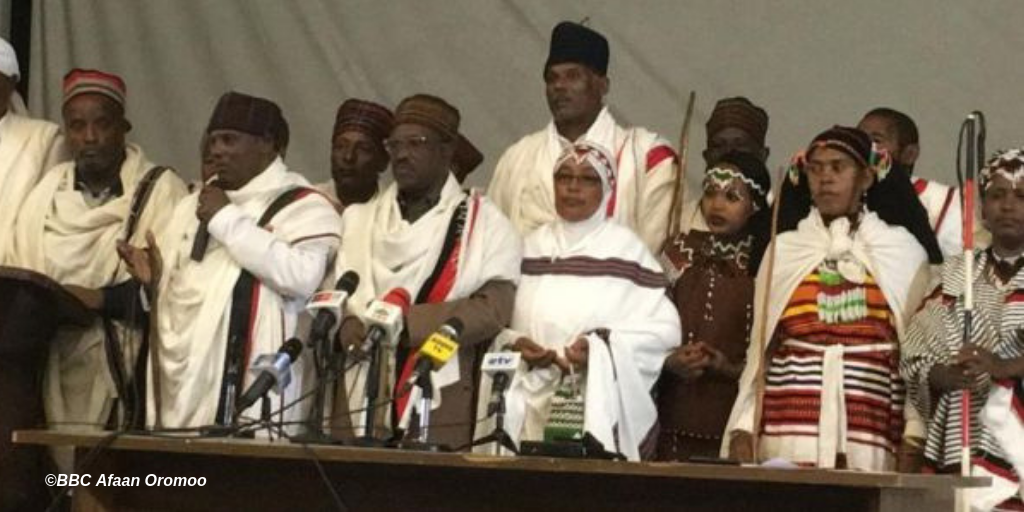
The Abba Gada Council of Oromo elders, perhaps sensing the dangerous juncture the standoff pointed towards, put in a marathon-eque effort to bring the feuding entities to a compromise. They could not prevent the eventual breakout of all out hostilities. However, in the eyes of many, the difficulties they encountered point towards the impossibilities of a political settlement.
In late February 2019, for example, weeks after the council announced that it would send members to OLA strongholds to hold discussions with rebel fighters, three of them were kidnapped while in Qellem Wollega. The government was accused of being behind the kidnappings with the goal of stagnating talks. The incident came a mere month after a consortium of around twenty Oromo elders and activists reportedly camped outside the Prime Minister’s office in Addis Abeba with the hope of getting an audience with Prime Minister Abiy. The group, desperate for leverage from the country’s leader that might have helped boost negotiations, were apparently rebuffed despite sitting on the ground outside the premises for hours.
Throughout negotiations, the Aba Gada Council’s attempts at dialogue with the government hit a brick wall. Those representing the government irked the mediators with their polarizing rhetoric. “Try to convince as many (OLA fighters) as you can to come home,” urged regional government spokesman Taye Dendea in the presence of the elders. “These are all bank robbers and murderers. We will pick the rest off the battlefield,” he said. This was but one of plenty of incidents where unhelpful government negotiators used rhetoric that could qualify as warmongering. One member of the Aba Gada Council writing for local media outlet, The Reporter said that “the government has benefited greatly from the shattering of the peace process.”
Behind the phone and internet blockades
The government continues to cut off all phone and internet services in Wollega in areas under the command post, an equivalent of a martial law. The outages often coincide with an increase in frequency of military clashes. Such outages became the norm in 2019, the year the once sparse clashes with the OLA turned into an all-out military engagement. The restrictions have made reporting from the area and verifying information an extremely difficult task for journalists keen to cover the ongoing conflict. As a result, widespread abuses, alleged to have been carried out by both sides against each other and the local population, have largely gone under-reported, if not unreported.
In his conversation with Addis Standard, Oromia President Shimelis Abdisa claims that investigators have determined that OLA assassins use phones to coordinate the stalking, pursuit and murder of government officials they often target. This is among the main reasons the government has resorted to cutting mobile data and phone services from the area, he says.

“The internet and telephone blockades are part of the effort to halt the works of OLA death squads. They operate in teams, communicating orders and information as to the location and description of targets. They have killed many this way,” President Shimelis reiterates.
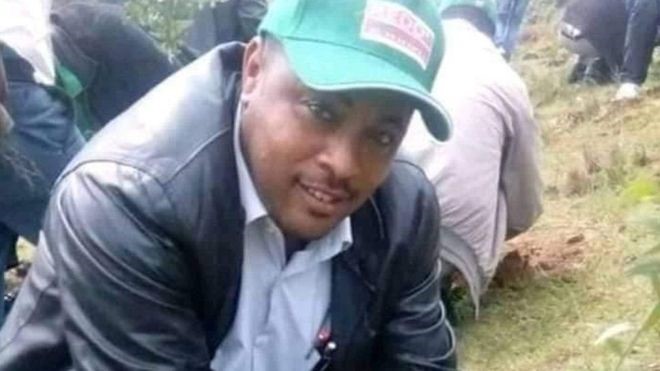
Given the little coverage in the mainstream Ethiopian media as a whole, the larger Ethiopian public remains shielded from the conflict and for the most part blissfully unaware of the shocking carnage and brutalities carried out across western and southern Oromia. The ruling party recently rebranded itself the “Prosperity Party,” and has gone to great lengths to protect its image and portray itself as an agent of change and promoter of peace. As such, many may naively think that reports of civil war in Ethiopia are a thing of the past, anecdotes of a bygone era. One could thus assume that the government is content to keep things under the rug and away from the national spotlight. With little knowledge about the breakout of the country’s worst civil war since the 2007 Ogaden counterinsurgency, the public is even less likely to be aware of the government’s major contributions to quashing the multiple peace initiatives that could have prevented the calamity that has seen its own forces suffer 670 fatalities.
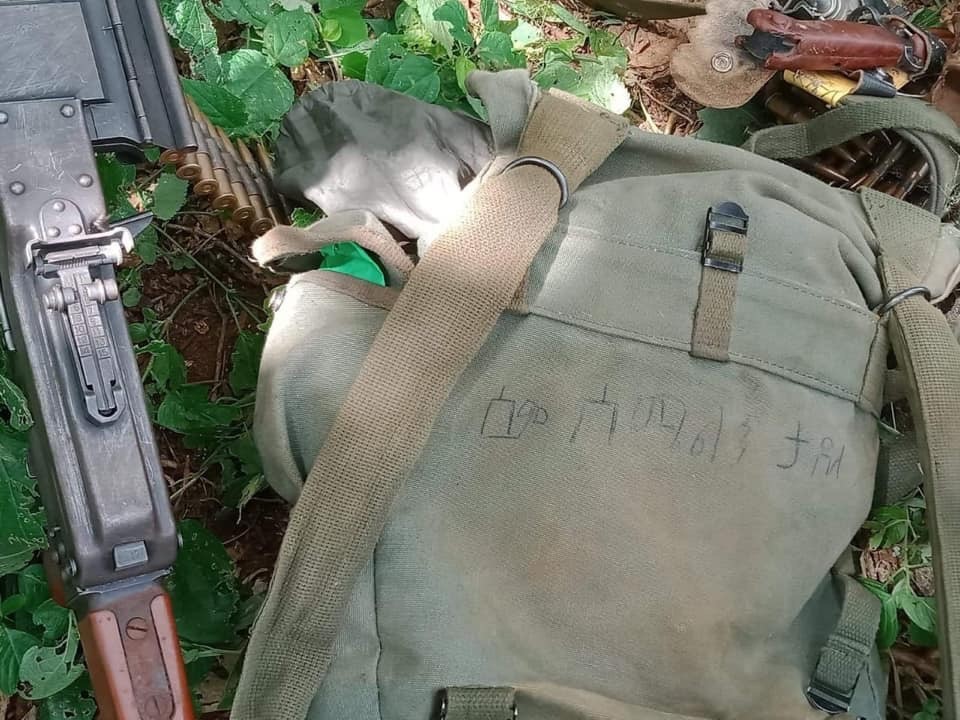
The state run Ethiopian Human Rights Commission (EHRC) recently announced that it had authored a report on the country’s human rights situation over the past six months. It isn’t clear if the EHRC made any mention of the crisis in Wollega in the report, which hasn’t been released to the public yet. EHRC head Daniel Bekele was asked by Addis Standard as to what information his organization had collected with regards to the recent killings and the military conflict as a whole.
“It is an area of an active military operation and we are following up on reports of several arrests including in unofficial detention places such as army bases,” Daniel wrote in his emailed response. “But there are no reports of mass civilian killings. The army has handed over several detainees to police custody but there hasn’t been much progress yet on investigations and on pressing charges.”
The EHRC chief didn’t clarify whether any efforts to investigate human rights abuses in the area have been hindered by the presence the military command post and the internet outages.
Unlike the negotiations that broke down and led to the current crisis, the negotiations that led to the peace treaty, signed in Asmara in 2018, were covered by both local and international press. Hailed as a monumental moment, the OLF’s subsequent return to Ethiopia and pledge to help reconstruct the country’s fledgling democracy was highlighted by many as a sign of the new government’s sincerity to reconcile with its foes.
But the spotlight and global audience had shifted their interest elsewhere by the time the OLA declared itself a separate entity from the OLF. The ongoing crisis, reports of horrific abuses being carried out by both warring entities, the death toll, and the displacement of scores of people from the region, have failed to make enough headlines. The government hasn’t faced any sort of scrutiny for what appears to have been a hardheaded, simpleminded approach that proved detrimental to negotiations and contributed directly to a totally avoidable crisis. The sobbing of loved ones mourning their dead sons, daughters and parents continues as measures are carried out unabated and victimizing unarmed civilians uninvolved with the war. As recently as March 07, Oromia regional state vowed to crush the “illegal activities” being committed by OLA.
The perplexing nature of the crisis means, just a few days earlier, newly planned initiative to reignite peace talks was launched by renowned artists, businessmen and other personalities who seek to succeed where a host of others failed. It remains to be seen if the elephant in the room will allow space for dialogue to triumph over conflict. But whether it succeeded or not, it is too little too late for the likes of Naol, Desta, Nebiyu, Dereje, Daniel and countless more who have already paid in their lives for a crisis the rest of Ethiopia is blissfully unaware of. AS
__________________________________//_____________________________________
Editor’s Note: The editorial of Addis Standard would like to acknowledge Waqgari Regassa for his contributions to this report.



